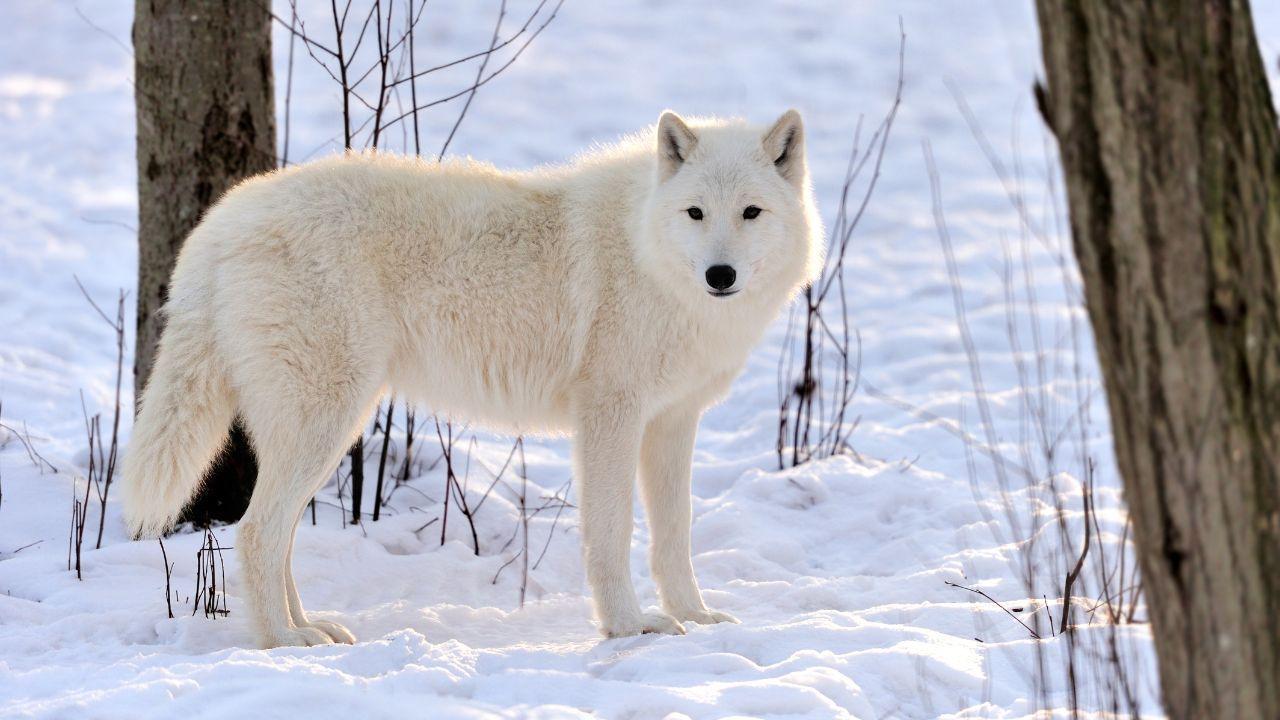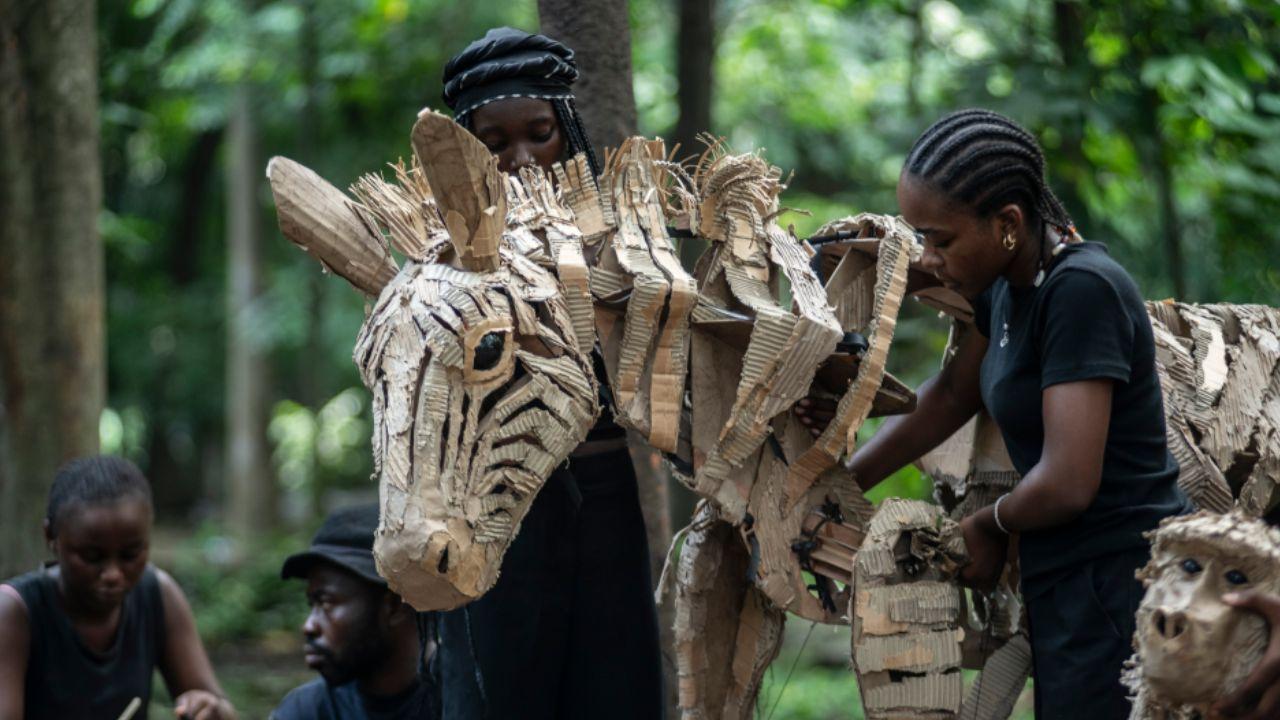
Post by: Bandan Preet
The Dire Wolf Is Back After 12,000 Years
For over 12,000 years, the Dire Wolf roamed only in fossils and fantasy. Thought to be extinct since the end of the last Ice Age, this legendary predator—larger and more powerful than today’s gray wolves—has captured imaginations for centuries. But now, new scientific discoveries and advanced DNA research suggest the Dire Wolf might be ready for a remarkable comeback—not in the wild (yet), but in a way that could redefine how we see ancient species.
So, how can a creature long extinct suddenly return to the headlines of modern science? Let’s dive deep into the mysterious world of the Dire Wolf, its history, rediscovery, and what the future holds.
What Was the Dire Wolf?
The Dire Wolf (Canis dirus) was a powerful carnivore that lived during the Late Pleistocene Epoch, mainly across North and South America. It measured around 5 to 6 feet in length and weighed between 130 to 150 pounds—much heavier and more muscular than today’s wolves.
While it looked similar to the modern gray wolf, recent studies show that the Dire Wolf was not closely related. In fact, genetic evidence reveals it was part of a different lineage altogether, more ancient and distinct.
A Fossil Favorite for Over a Century
The Dire Wolf earned its fame in part due to thousands of fossilized remains found in the La Brea Tar Pits in California. These tar pits preserved entire skeletons, giving scientists rare insights into the creature's diet, build, and even behavior.

For decades, paleontologists believed the Dire Wolf was simply a bigger cousin of the gray wolf, adapted to hunting larger Ice Age prey like bison, camels, and horses. But as science evolved, so did our understanding.
DNA Surprise: Dire Wolves Were Not True Wolves
The biggest breakthrough came in 2021 when an international team of researchers extracted and sequenced ancient DNA from Dire Wolf bones. The results shocked the scientific community: the Dire Wolf wasn't even a true wolf!
Instead, it belonged to a now-extinct genus that split from the common ancestor of modern wolves, foxes, and jackals nearly 5 million years ago. This meant the Dire Wolf evolved on a completely separate path, isolated in the Americas for millennia.
This discovery reshaped our understanding of prehistoric predators and opened new doors to the idea of “de-extinction” or recreating species from ancient DNA.
The Comeback: Can the Dire Wolf Be Brought Back?
While Jurassic Park remains fiction, science is edging closer to making de-extinction possible. With the complete genome of the Dire Wolf now decoded, researchers are exploring whether it's possible to bring it back—or at least recreate something very close.
Using gene-editing technologies like CRISPR, scientists could, in theory, introduce Dire Wolf traits into the DNA of modern canines. It wouldn’t be a 100% pure Dire Wolf, but it could resemble one in behavior, appearance, and genetic makeup.
This concept, while controversial, is being actively explored in other species too—like the woolly mammoth.
Why the Dire Wolf’s Return Matters
Bringing back the Dire Wolf is more than a scientific stunt. It holds significant ecological and evolutionary value.
Biodiversity Restoration: Reintroducing extinct predators could help restore balance to ecosystems where prey populations have exploded.
Scientific Understanding: The Dire Wolf offers insights into how animals adapt to climate changes, a lesson critical in today’s warming world.
Public Interest: The return of an ancient predator stirs excitement and funding for paleontology and conservation.
However, this also raises ethical concerns. Should we revive extinct species? Could they survive in today’s environment? And what happens if they don’t fit in?
Pop Culture’s Favorite Predator
From TV shows like Game of Thrones to video games and novels, the Dire Wolf has always been a symbol of strength, mystery, and wild beauty. Its popularity in pop culture has helped keep its legend alive—and now, science is adding a real-world twist to the tale.
Imagine seeing a living, breathing Dire Wolf—not just on screen, but in sanctuaries or specialized wildlife reserves. It could happen within a few decades.
The Future of the Dire Wolf
So, is the Dire Wolf truly back?
In some ways, yes. Thanks to genetic research and fossil studies, it’s no longer a forgotten predator of the past. Its DNA, legacy, and story are alive—more than they’ve been in 12,000 years.
Whether it roams again in real forests or just in our imagination, one thing is clear: the Dire Wolf is no longer extinct in our minds or science. It’s a powerful symbol of how far we've come in understanding life’s mysteries—and how much more there is to explore.
Disclaimer:
The content presented in this article is for informational and educational purposes only. While DXB News Network strives to ensure accuracy and reliability, we do not guarantee the completeness or current validity of the information provided. Scientific discoveries and interpretations may evolve over time. Readers are encouraged to consult official sources or scientific publications for in-depth research. DXB News Network is not responsible for any decisions made based on this content.
Photo: X/@colossal
#trending #latest #direwolf #extinctanimals #prehistoriclife #paleontology #ancientpredator #dnaresearch #wildlifereturns #iceageanimals #fossildiscovery #deextinction #evolutionnews #speciescomeback #sciencenews #animalhistory #wolfspecies #headlines #topstories #globalUpdate #dxbnewsnetwork #dxbnews #dxbdnn #dxbnewsnetworkdnn #bestnewschanneldubai #bestnewschannelUAE #bestnewschannelabudhabi #bestnewschannelajman #bestnewschannelofdubai #popularnewschanneldubai

Dubai awards AED1.4B contracts under Tasreef to fight floods and build stronger drainage for the future...Read More.

Sheikh Zayed Grand Mosque welcomed 1.89M during Ramadan & Eid with prayers, tours, meals & cultural events. A peaceful, spiritual destination....Read More.














Rizwan Says English Isn’t a Must, Only Cricket Matters
Mohammad Rizwan proudly says he’s not ashamed of poor English. For him, playing cricket for Pakistan

Nightclub Roof Collapse in DR: Death Toll Hits 226
226 dead in Dominican nightclub collapse; nation mourns as families seek answers

Middle East’s Growing Influence in Formula 1 Recognized by FIA President Mohammed Ben Sulayem
Middle East’s Growing Influence in Formula 1 Recognized by FIA President Mohammed Ben Sulayem

'The Herds' starts journey from Africa to the Arctic Circle
‘The Herds,’ a cardboard animal show, starts in Congo to show how climate change pushes nature away.

Millie Bobby Brown explores Dubai in new campaign
Millie Bobby Brown stars in a fun Dubai film with Jake Bongiovi, sharing her journey through city st